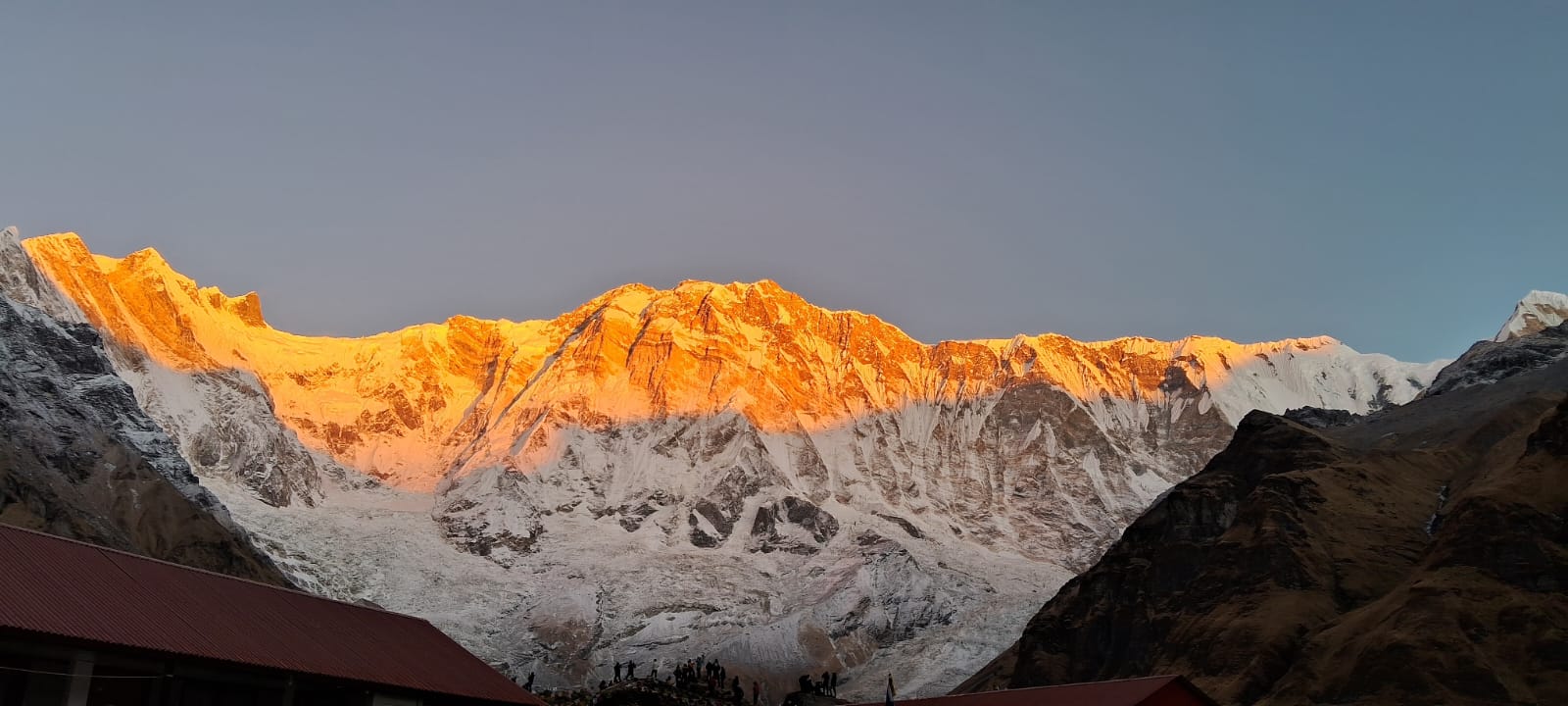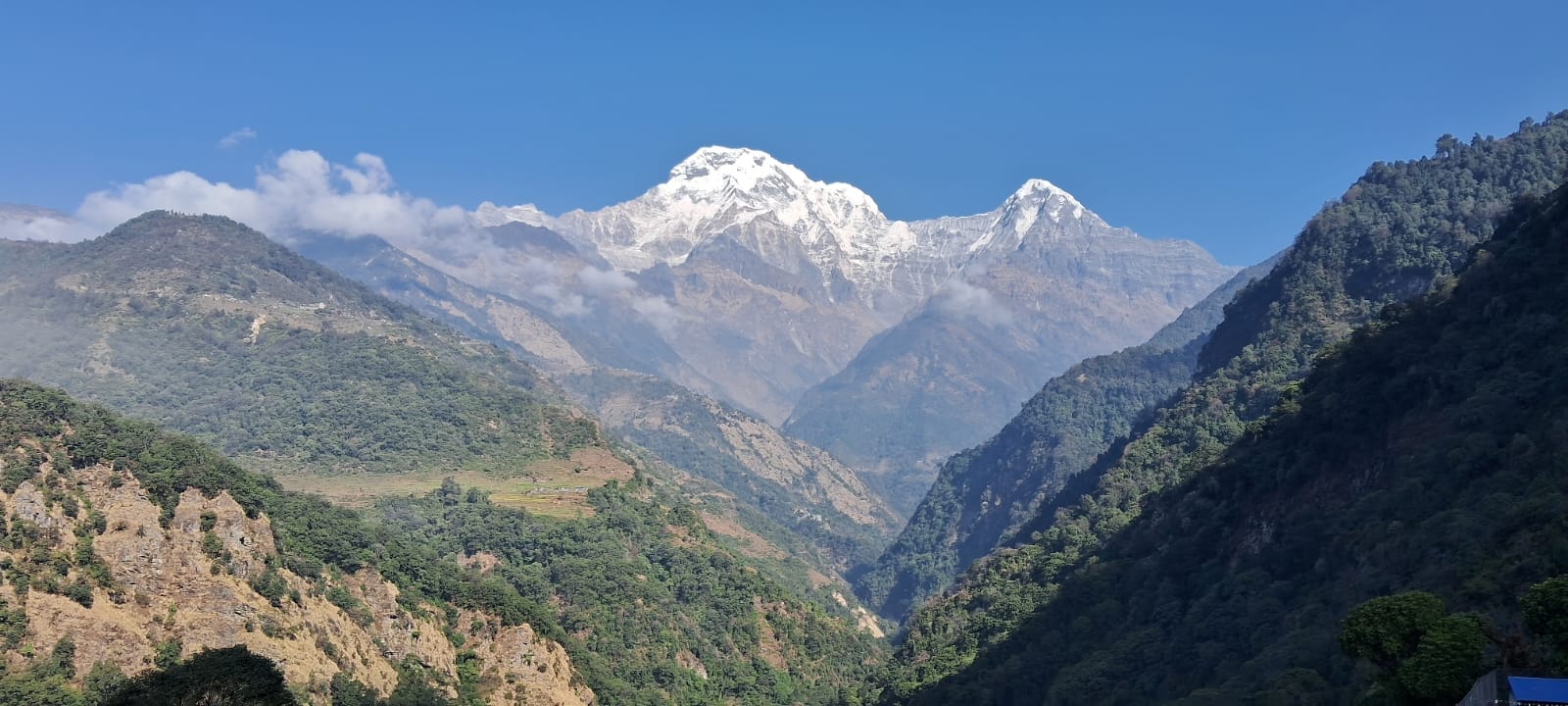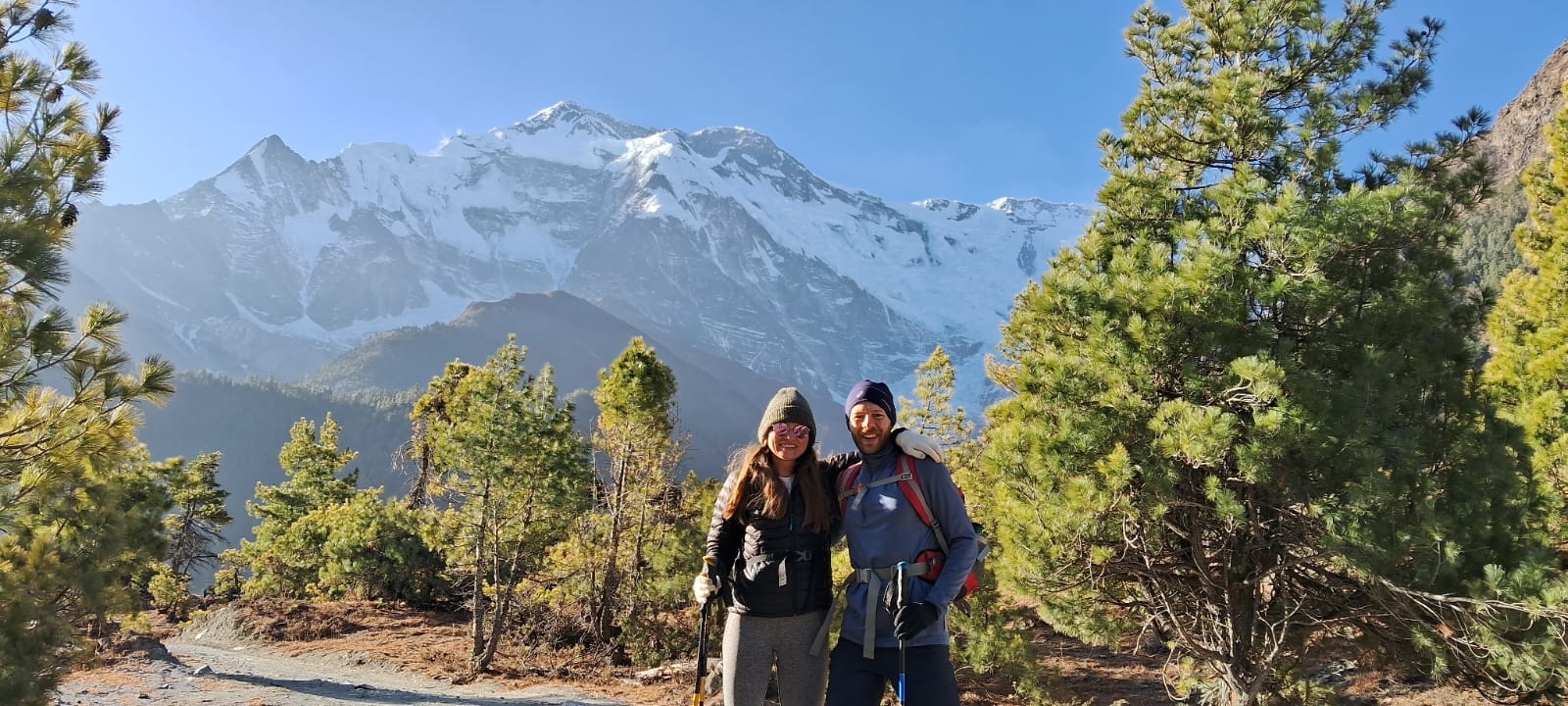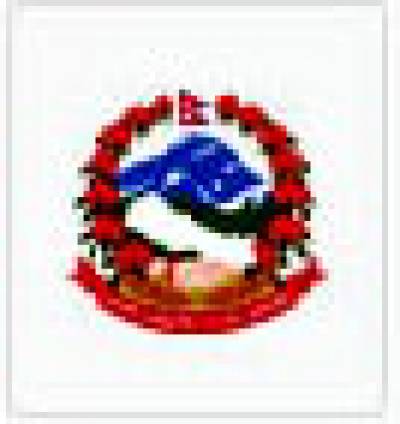ANNAPURNA CIRCUIT WITH ABC TREK FROM POKHARA
The Annapurna Circuit with Annapurna Base Camp (ABC) trek is an incredible journey that combines the breathtaking views of the Annapurna region's high peaks with a rich cultural experience. Designed by Sherpa Expedition and Trekking, this 15-day itinerary offers trekkers the opportunity to explore some of the most iconic landscapes in Nepal.
Your adventure begins with a drive from Pokhara to Besishahar and then continues by jeep to Chame, a picturesque village located on the edge of the Annapurna Circuit. From Chame, you begin your trek towards Upper Pisang, offering stunning views of the Himalayas, including the Annapurna and Pisang peaks. As you trek, you pass through traditional villages like Ngawal, where you can explore Tibetan culture before reaching Manang.
A rest day in Manang allows for proper acclimatization. You can take short hikes around the area, including the famous Ice Lake or visit the Lama Cave. After acclimatizing, you continue your trek, ascending to Yak Kharka and then to Thorong Phedi. Here, you have the option to acclimatize further by visiting the high camp.
On the following day, you will rise early to tackle the Thorong La Pass (5,416m), one of the highest trekking passes in the world. After crossing the pass, you descend to the sacred town of Muktinath, known for its spiritual significance to both Hindus and Buddhists.
Next, you will head to Tatopani for a relaxing soak in natural hot springs before continuing to Ghorepani. An early morning hike to Poon Hill provides some of the best panoramic views of the Annapurna and Dhaulagiri ranges. From there, you continue the trek to Tadapani, Chhomrong, and finally, to the Annapurna Base Camp (ABC). The views of Machapuchare, Annapurna I, and other peaks are awe-inspiring.
The trek continues to Bamboo and Jhinu, where you can enjoy hot springs before trekking to Nayapul and driving back to Pokhara, bringing an unforgettable adventure to an end.
ITINERARY
Day 1 : Drive from Pokhara to Chame (2,760m) – Duration: 9-10 hours.
The journey begins with a scenic drive from Pokhara to Chame. You will travel by local bus or jeep, passing through lush valleys, terraced fields, and picturesque villages. This long drive sets the stage for the exciting trekking adventure ahead. Upon arrival at Chame, enjoy the first views of the Annapurna Range.
Day 2 : Trek from Chame to Upper Pisang (3,300m) – Duration: 5-6 hours.
Today, you will begin your trek, following a beautiful route that winds through pine forests, crossing streams and suspension bridges. The trail leads to the village of Upper Pisang, where you will be rewarded with amazing views of the Annapurna peaks. The altitude gain helps in gradual acclimatization.
Day 3 : Trek from Pisang to Manang (3,500m) via Ngawal Village – Duration: 8-9 hours.
This challenging day involves trekking through the fascinating villages of Ngawal and continuing towards Manang. The route offers spectacular views of the surrounding peaks, including Annapurna II and III. You will experience high-altitude hiking as you approach Manang, where you can relax and enjoy the village’s cultural charm.
Day 4 : Rest Day at Manang for Acclimatization.
A crucial day for acclimatization to prevent altitude sickness. You can explore Manang, visit the Himalayan Rescue Association, or take a short hike to higher altitudes like the Ice Lake or Gangapurna Lake, which helps your body adjust to the thinning air.
Day 5 : Trek from Manang to Yak Kharka (4,200m) – Duration: 4-5 hours.
The trek to Yak Kharka is a shorter day, but still a significant elevation gain. Along the way, you will cross alpine meadows and may see yaks grazing. The views of Annapurna II and Gangapurna are magnificent. This day also helps with acclimatization.
Day 6 : Trek from Yak Kharka to Thorong Phedi (4,600m) – Duration: 3-4 hours.
Today's trek takes you to Thorong Phedi, the base camp for the Thorong La Pass. This is a shorter, easier day to help you rest and prepare for the challenging pass crossing. The area is surrounded by towering peaks, and the higher altitude will prepare you for tomorrow’s ascent.
Day 7 : Trek to Muktinath via Thorong La Pass (5,416m) – Duration: 7-8 hours.
The day you’ve been waiting for! Early in the morning, you start your trek to Thorong La Pass. The pass is the highest point of the Annapurna Circuit and offers panoramic views of the surrounding peaks. Afterward, descend to Muktinath, a sacred pilgrimage site for both Hindus and Buddhists, where you will find peace and serenity.
Day 8 : Drive from Muktinath to Tatopani (1,200m) – Duration: 6-7 hours.
Enjoy a relaxing drive to Tatopani, a village famous for its hot springs. Here, you can unwind and soak in the natural hot springs to relieve sore muscles after the pass crossing. The drive offers views of terraced fields, lush valleys, and dramatic landscapes.
Day 9 : Trek from Tatopani to Ghorepani (2,860m) – Duration: 7-8 hours.
The trek today will take you through forests and villages, offering beautiful views of the surrounding peaks. The trail gradually ascends to Ghorepani, a popular stop for trekkers with stunning views of Annapurna South and Dhaulagiri.
Day 10 : Hike to Poon Hill (3,210m) & Trek to Tadapani (2,300m) – Duration: 5-6 hours.
An early morning hike to Poon Hill rewards you with a breathtaking sunrise view over the Annapurna Range, including the iconic Machapuchare (Fishtail Peak). Afterward, trek down to Tadapani, a beautiful village surrounded by rhododendron forests.
Day 11 : Trek from Tadapani to Upper Sinuwa (2,350m) – Duration: 7-8 hours.
This day takes you through scenic trails as you ascend to Upper Sinuwa. You’ll be surrounded by dense forests of oak and rhododendron, and the views of the peaks continue to amaze.
Day 12 : Trek from Upper Sinuwa to Deurali (3,230m) – Duration: 6-7 hours.
Today, you trek to Deurali, a high-altitude village with panoramic views. You’ll continue climbing along the Modi Khola River, passing through dense forests and rocky paths.
Day 13 : Trek from Deurali to Annapurna Base Camp (4,120m) – Duration: 5-6 hours.
This is the day you reach Annapurna Base Camp, a highlight of the trek. The panoramic views of Annapurna I, II, III, and Machapuchare are awe-inspiring. It’s a moment to take in the grandeur of the Himalayas.
Day 14 : Trek from Annapurna Base Camp to Sinuwa (2,350m) – Duration: 7-8 hours.
After spending time at Annapurna Base Camp, you begin your descent back to Sinuwa. The route offers a different perspective of the mountains as you retrace your steps and start descending to lower altitudes.
Day 15 : Trek from Sinuwa to Matque & Drive to Pokhara (827m) – Duration: 7-8 hours.
On the final day, you trek from Sinuwa to Matque and catch a local bus or jeep back to Pokhara, where your incredible Annapurna adventure comes to an end.
SERVICES
Cost Included in Your Package
- Drive from Pokhara to Besisahar by local bus and Besisahar to Chame by local shared Jeep.
- Drive from Muktinath to Tatopani by local bus & Matque- Nayapul to Pokhara by private car at the end of the trek.
- Tea House/Lodge accommodation during the trek.
- Three meals a day (Breakfast, Lunch, and Dinner) are provided throughout the trek.
- Experienced and qualified trek leader (guide) with a government license, and an assistant trekking guide for groups of 8 or more trekkers.
- Porter service: One porter for every two trekkers to help carry your luggage.
- Porters' coverage: Their salary, food, accommodation, insurance, and safety equipment.
- The Annapurna Conservation Area Permit (ACAP) fee is included.
- The Trekkers Information Management System (TIMS) card fee is covered.
- Use of trekking gear: Sleeping bag, down jacket, duffel bag, and walking poles (if you don't have your own), to be returned after the trek.
- Assistance with emergency rescue operations (funded by your travel insurance) in case of severe health conditions.
- Sherpa Expedition and Trekking appreciation certificate after completing the trek.
- Oxygen meter to check your pulse, oxygen saturation, and heart rate twice daily, ensuring your health and safety during the trek.
Cost Not Included in Your Package
- International Flight to and from Nepal.
- Nepal entry visa fee: Visas can be obtained easily on arrival at Tribhuvan International Airport, Kathmandu. The fees are as follows:
- $30 USD for a 15-day visa
- $50 USD for a 30-day visa
- $125 USD for a 90-day visa
- Accommodation and meals in Pokhara (other than those provided during the trek).
- Extra night accommodation in Kathmandu or Pokhara due to early arrival, late departure, or early return from trekking for any reason outside the scheduled itinerary.
- Personal expenses such as shopping, snacks, bar bills, tea, coffee, hot water, bottled or boiled water, shower fees, Wi-Fi, laundry, telephone calls, battery recharges, extra porters, etc.
- Personal clothing and gear not provided in the package.
- Travel insurance: It is strongly recommended to have insurance that covers trekking in high-altitude areas.
- Tips for your guide and porters, which is customary in Nepali culture.
- Additional costs or delays caused by circumstances beyond our control, such as landscape changes, bad weather, itinerary modifications for safety, illness, changes in government policy, political instability, strikes, or other unforeseen events.
- NOTE: If you return earlier from the trek due to sickness or any other reason, expenses for flights, hotels, meals, and other services are nonrefundable. You will be responsible for any additional costs incurred in Kathmandu or Pokhara.
EQUIPMENTS
The following information will give you some idea about what you need to bring for the trek. It is important you do not forget the essential items, as this will determine your comfort and safety on the trek. Equally important is that you do not burden yourself with unnecessary equipment on the trek.
- Sleeping Bag (Sherpa Teams will provide but need to return after completing the trip)
- Duffel Bag (Sherpa Teams will provide but need to return after completing the trip)
- Fleece jacket or pullover
- Waterproof windbreaker or windcheater
- Thermal underclothes
- Rain poncho
- Down jacket (Sherpa Teams will provide but need to return after completing the trip)
- Fleece or wool trousers
- Sun hat or scarf
- Trekking pants (two pairs)
- Mittens or woolen gloves
- Hiking socks (several pairs)
- Moisture-wicking shirts, including t-shirts
- Trekking shoes or boots with spare laces
- Flip-flops or sandals for relaxing in the evenings
- Underwear (several pairs)
- Swimsuit or swimming costume
- Sunglasses
- Headlamp or flashlight/torch
- Sleeping bag (Sherpa Teams can provide this for you)
- Trekking poles (if desired)
- Hiking backpack with a capacity of at least 40 liters
- Small lock for your backpack
- Reusable water bottles (at least two liters)
- Water purification tablets or filtration device
- Wash towel
- Basic first aid kit
Toiletries (tissues, toilet paper, moisturizer, lip balm, sunscreen, sanitary pads, hand sanitizer, nail clippers, a small mirror, toothbrush, toothpaste, glasses, contacts, etc.)
GOOD TO KNOW
🗺️ Annapurna Trekking Permits
Before starting the Annapurna Circuit and ABC trek, trekkers are required to obtain two permits: the Annapurna Conservation Area Permit (ACAP) and the Trekkers' Information Management System (TIMS) card. These permits can be obtained in Pokhara or Kathmandu and will allow you to enter the protected Annapurna region. Make sure to carry these permits at all times as they will be checked at several checkpoints along the route.
🌞 Best Time to Trek
The best seasons for the Annapurna Circuit and ABC trek are spring (March to May) and autumn (September to November). During these months, the weather is generally stable, with clear skies and mild temperatures, providing the best views of the majestic peaks. Avoid the monsoon season (June to August), as heavy rain can make the trails slippery and increase the risk of landslides.
🏃♂️ Physical Fitness and Preparation
While the Annapurna trek is achievable for most trekkers with moderate fitness, it’s important to prepare your body for long hikes at high altitudes. Regular cardiovascular exercises, such as walking, running, and stair climbing, will help. Don’t forget to pack proper trekking shoes, and ensure you have proper training before the trek begins to handle the rigors of 8-10 hour walking days.
⛰️ Altitude and Acclimatization
The trek takes you to altitudes of over 5,000 meters (Thorong La Pass), so acclimatization is crucial. It’s recommended to spend at least two nights at higher altitudes, such as in Manang, before crossing the pass to minimize the risk of altitude sickness. Drink plenty of water, eat well, and take it slow—if you feel symptoms of altitude sickness, do not ascend until you're feeling better.
💧 Water and Hydration
Access to drinking water is available along the route, but it is essential to bring your own water purification tablets or a filter. In addition to carrying purification tablets, it's a good idea to bring a water bottle that is easy to refill. Staying hydrated during the trek is key to maintaining energy levels and avoiding altitude sickness.
📡 Communication and Connectivity
While trekking in the Annapurna region, mobile reception is generally available in the lower parts of the trek (until Manang). However, once you reach higher altitudes, network coverage can be unreliable. Some teahouses offer Wi-Fi for a fee, but this can be slow. It's recommended to focus on enjoying the natural beauty without relying too much on devices.
💼 Packing Essentials
Pack light but ensure you carry layers of clothing for different weather conditions. Essential gear includes a good sleeping bag for cold nights, trekking boots, headlamps, first aid kit, rain gear, sunscreen, and hats. For those heading to high altitudes, down jackets are essential for warmth. A lightweight backpack is also important for comfort and easy mobility on the trail.
🚶♂️ The Local Culture and Customs
The Annapurna region is home to a variety of ethnic groups, including Tibetan, Gurung, and Magar communities. Respect the local customs and always ask before taking photos of people or their property. Be mindful of religious sites and ask permission before entering monasteries or temples. Cultural awareness and sensitivity will ensure a positive experience for both you and the locals.
🏥 Travel Insurance and Emergency Support
It's strongly advised to get comprehensive travel insurance that covers high-altitude trekking, emergency evacuation, and medical care. The trek can be physically demanding, and in case of any emergency, helicopter evacuation may be required. Having reliable travel insurance can save you significant expenses should the need arise for evacuation or medical treatment.
🛏️ Lodging and Food
Teahouses along the Annapurna Circuit and ABC trek offer basic but comfortable lodging with clean rooms and simple meals. The food is nutritious—expect hearty Dal Bhat (lentil soup and rice), soups, noodles, and local vegetarian dishes. While vegetarian meals are popular, non-vegetarian options may also be available.
MAP
PHOTOS/Videos
Departures
Select a departure month
Fill out the form below and a Travel Expert will reach out to create your perfect tour.
FAQS
What is the best time to do the Annapurna Circuit Trek?
The best times to trek the Annapurna Circuit are spring (March-May) and autumn (September-November). These months offer clear skies, pleasant temperatures, and stunning views. Avoid the monsoon season (June-August), as rain can make the trails slippery and increase the risk of landslides.
How difficult is the Annapurna Circuit Trek?
The Annapurna Circuit trek is considered moderately challenging. While the trek doesn't require technical climbing skills, it involves long daily walking hours (5-8 hours), and there are high-altitude sections that can be strenuous. It is suitable for trekkers with moderate fitness levels and some prior hiking experience.
How high does the Annapurna Circuit go?
The highest point of the trek is Thorong La Pass at 5,416 meters (17,769 feet). Proper acclimatization is important to avoid altitude sickness, as the trek reaches altitudes higher than 3,000 meters in some places.
Do I need permits for the Annapurna Circuit Trek?
Yes, trekkers need two permits: the Annapurna Conservation Area Permit (ACAP) and the Trekkers' Information Management System (TIMS) card. Both can be obtained in Kathmandu or Pokhara before starting the trek.
How long does the Annapurna Circuit Trek take?
The trek typically takes 12-15 days, depending on the route, itinerary, and the pace of the trekker. The trek can be shortened or extended by skipping/resting in certain towns or adding side treks like Annapurna Base Camp.
Is there internet or phone coverage on the trek?
Phone signal and Wi-Fi are available in lower altitudes (such as in Pokhara and Manang), but coverage becomes limited at higher altitudes. Some teahouses offer Wi-Fi, but it's often slow and may require a small fee.
What type of food is available on the trek?
Teahouses along the route serve a variety of foods, including Dal Bhat (rice with lentil soup), noodles, soup, and vegetarian meals. Western options like pancakes, pasta, and eggs are also available. Non-vegetarian meals can be found in some places.
How much should I budget for the Annapurna Circuit Trek?
The total cost can range from USD 500 to 1,500 depending on your travel style, accommodations, and the length of the trek. Budget travelers can keep costs down by staying in basic teahouses and eating local meals, while those seeking more comfort can opt for lodges with private rooms.
Can I do the Annapurna Circuit Trek without a guide?
Yes, the Annapurna Circuit is well-marked, and it is possible to trek independently. However, many trekkers prefer to hire a guide or porter for convenience, navigation, and local insight. Guides also help with communication in remote areas and can offer safety during the trek.
What should I pack for the Annapurna Circuit Trek?
You will need layers of clothing for different weather conditions, including trekking boots, a warm down jacket, waterproof jacket, first aid kit, sunscreen, and a headlamp. A sleeping bag, water purification tablets, and trekking poles are also useful. Don’t forget your camera to capture the stunning views!
Latest Traveller’s Reviews
Travel experiences of our clients who recently returned from their trips.
100%
Based On 5428 Reviews
Marcel Mastenbroek
Netherlands
April 9, 2025
Beautiful adventure
My brother and I had a great trip to the Everest Base Camp. Together with Santa our very well informed gide, who took care of us in a fantastic way and gave us much information during the hike, and Gulzen our porter (who carried each day our two bags of 10kg each plus his own bag....unbelievable). We had a wonderful time in the beautiful Himalayas, it was a lifetime experience!
Isabelle Fournier
Belgium
April 3, 2025
Incredible Journey With a True Legend
The Everest Three Pass Trek is hands-down the most beautiful and challenging trek I’ve ever done, and it was made unforgettable by our amazing guide, Pem Dorje Sherpa, from Sherpa Expedition & Trekking. Pem Dorje is a legend in every sense—calm, wise, strong, and full of stories. He knew the trails inside out and constantly kept us motivated, safe, and smiling. From the glacier crossings of Cho La to the dramatic views from Gokyo Ri, he made every moment special. One day, I struggled with altitude headaches, and Pem Dorje immediately adjusted our plan, gave me warm soup, and walked beside me at my pace. That level of care made all the difference. The trail itself is pure magic—massive peaks, prayer flags fluttering in the wind, quiet Sherpa villages, and stunning alpine lakes. We even spotted musk deer and Himalayan pheasants! Sherpa Expedition handled everything professionally, from airport pickup to gear checks. The porters were kind and efficient, and we had zero logistical issues. If you want to push yourself while being fully supported by a kind, knowledgeable guide, ask for Pem Dorje. You’ll finish stronger than you ever imagined—and happier, too.
Isabella Martinez
Australia
April 1, 2025
Sherpa-Led Magic in the Mountains – Guided by Tsering Phurba Sherpa
To say that the Everest Three Pass Trek was life-changing would be an understatement. The stunning peaks, vast glaciers, and kind people left an imprint on my soul. But what truly made the trek magical was Tsering Phurba Sherpa, our incredible guide from Sherpa Expedition & Trekking. Tsering was full of joy, laughter, and strength. He was a motivator and a protector—always keeping an eye on our group, adjusting our itinerary when needed, and celebrating every little win with us. I remember the cold mornings and long days, and how Tsering always had hot tea or a snack ready when we needed it most. His care was beyond professional—it felt personal. He even helped me with my backpack straps to ease shoulder strain, and gave away his spare headlamp to someone who lost theirs. The trek itself was everything I hoped for—raw, rugged, and rewarding. We hiked through snow, ice, rock, and forest. The Gokyo Lakes glowed like crystals, and Everest from Kala Patthar was overwhelming. Sherpa Expedition created the perfect balance between challenge and care. If you want to do this trek right, go with them—and ask for Tsering Phurba. You won’t regret it.
People Considering This Package Right Now Check availability
























